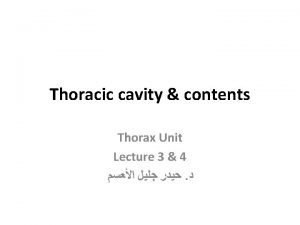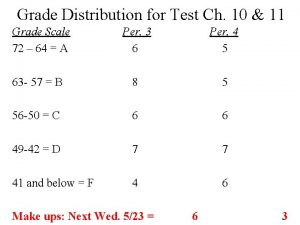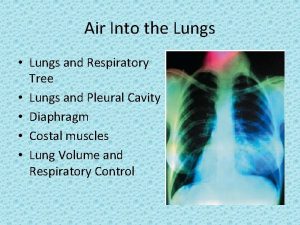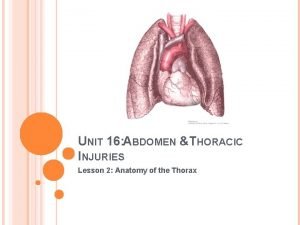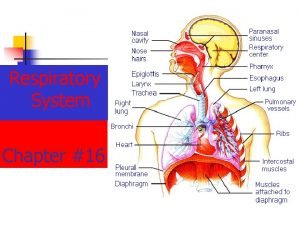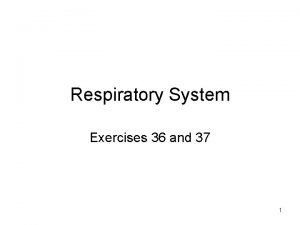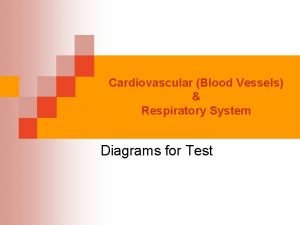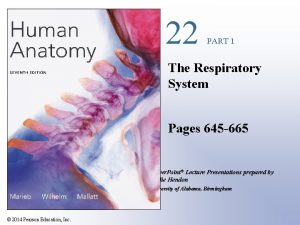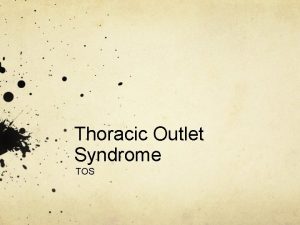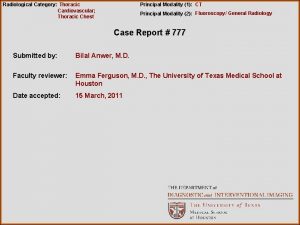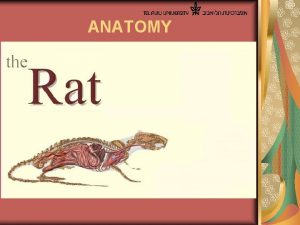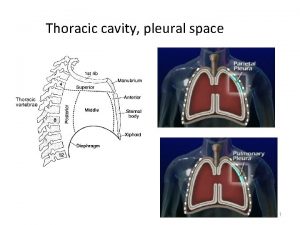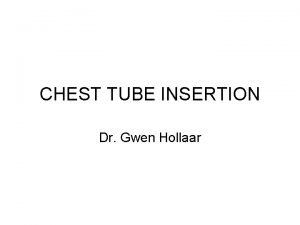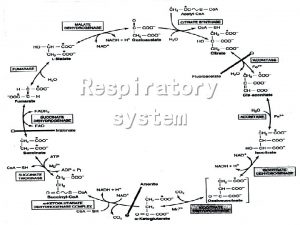The Respiratory System Structures Thoracic Cavity chest cavity














- Slides: 14

The Respiratory System

Structures ¡ ¡ Thoracic Cavity- chest cavity contains all respiratory organs Pleural Membranemembrane surrounding each lung

Mechanism of Breathing

1. INHALATION Ribs are raised (rib muscles contract) ¡ Diaphragm lowers ¡ Pressure in thoracic cavity drops = INHALE ¡

2. EXHALATION Ribs lowered (rib muscles relax) ¡ Diaphragm is raised ¡ Pressure in thoracic cavity increases = EXHALE ¡

Gas Exchange at Alveoli ¡ ¡ Pulmonary arteries (from heart) bring blood LOW in O 2 to alveoli of lungs Pulmonary veins (from lungs) return blood that is HIGH in O 2 to heart

Movement of Gases inside Alveoli

Pathway of Air STRUCTURE FUNCTION OR APPEARANCE 2 Nasal passages - filtering (hairs/cilia) - warming - moistening Nose Nasopharynx - olfactory cells (odour receptors) - tear ducts drain into nasal cavities - joining of nasal cavities

Pathway of Air (cont) STRUCTURE FUNCTION OR APPEARANCE Pharynx Larynx - glottis (opening) - epiglottis (flap over trachea) - vocal cords Trachea - cartilage; stiff tube - cilia beat dust/particles upwards

Pathway of Air (cont) STRUCTURE FUNCTION OR APPEARANCE Bronchus - branch to left & right lungs - right lung = 3 lobes - left lung = 2 lobes Bronchioles - smallest branches - no cartilage Alveoli - air sacs *gas exchange - blood capillary network - lipoprotein coating so won’t stick shut

VENTILATION Maintains a maximum O 2 concentration & a minimal CO 2 concentration within alveoli ¡ Mammals ventilate by negative pressure breathing 1. rib muscles contract: expands rib cage expands lungs 2. diaphragm contracts & flattens: pulls air in ¡

Diaphragm movement ¡ Shape of diaphragm moves from curved upwards to flat (pushed down)

Process of Breathing 1. Inspiration & Expiration 2. External Respiration: exchanging O 2 & CO 2 between air & blood 3. Internal Respiration: exchanging O 2 & CO 2 between blood & tissue fluid 4. Cellular Respiration: production of ATP in cells

Mechanism of Breathing Assignment Design 2 separate flowcharts or one overall flowchart to illustrate the steps in inspiration and expiration. * Make sure you include ALL the terms indicated on your assignment handout!!
 Dorsal cavity
Dorsal cavity Imaginary line through body
Imaginary line through body Nine regions of the abdominopelvic cavity
Nine regions of the abdominopelvic cavity Conducting zone and respiratory zone
Conducting zone and respiratory zone Tributaries of pulmonary vein
Tributaries of pulmonary vein Pig thoracic cavity diagram
Pig thoracic cavity diagram Kati mori
Kati mori Goblet cells of respiratory epithelium
Goblet cells of respiratory epithelium Thoracic cavity
Thoracic cavity Soft, spongy, cone-shaped organs in the thoracic cavity.
Soft, spongy, cone-shaped organs in the thoracic cavity. Thoracic cavity
Thoracic cavity Respiratory system nasal cavity
Respiratory system nasal cavity Arteries of the systemic circulation
Arteries of the systemic circulation Respiratory system nasal cavity
Respiratory system nasal cavity Respiratory digestive and circulatory system
Respiratory digestive and circulatory system




